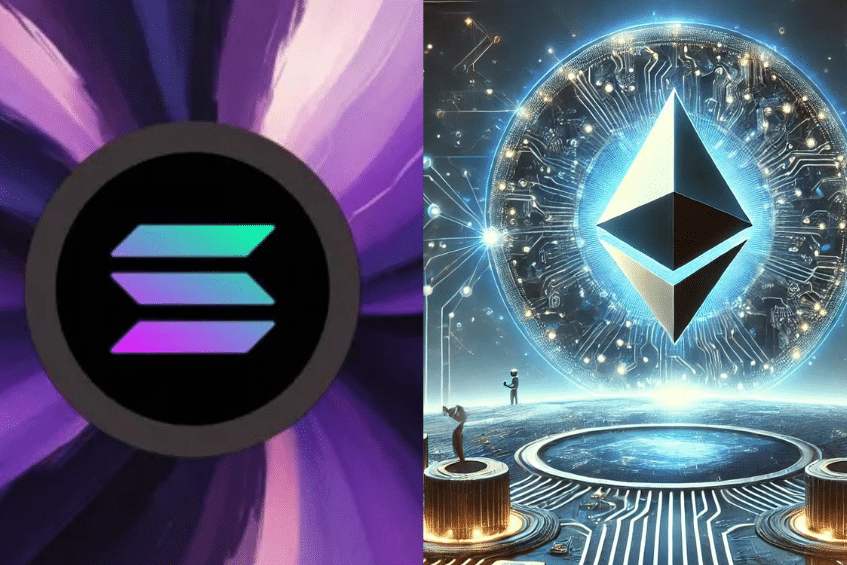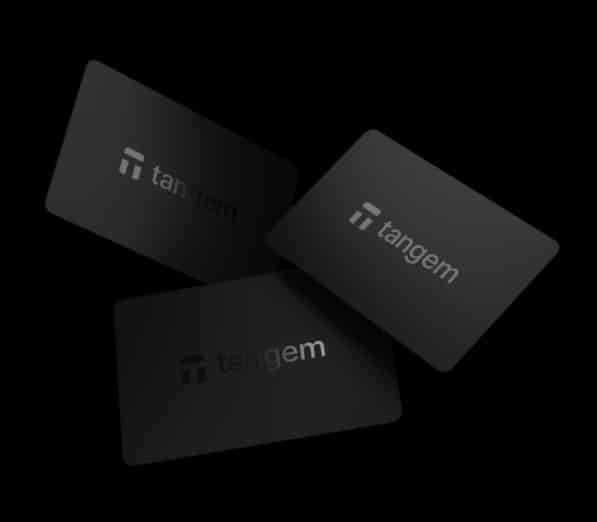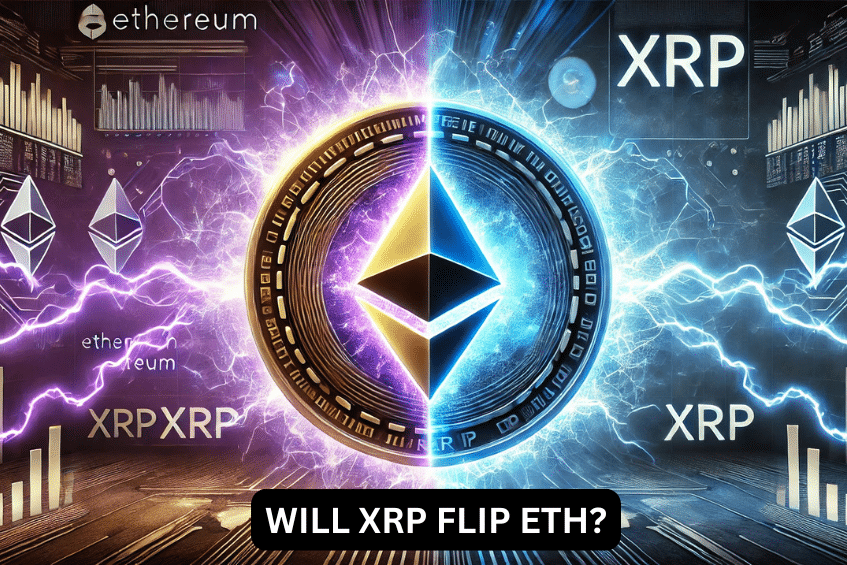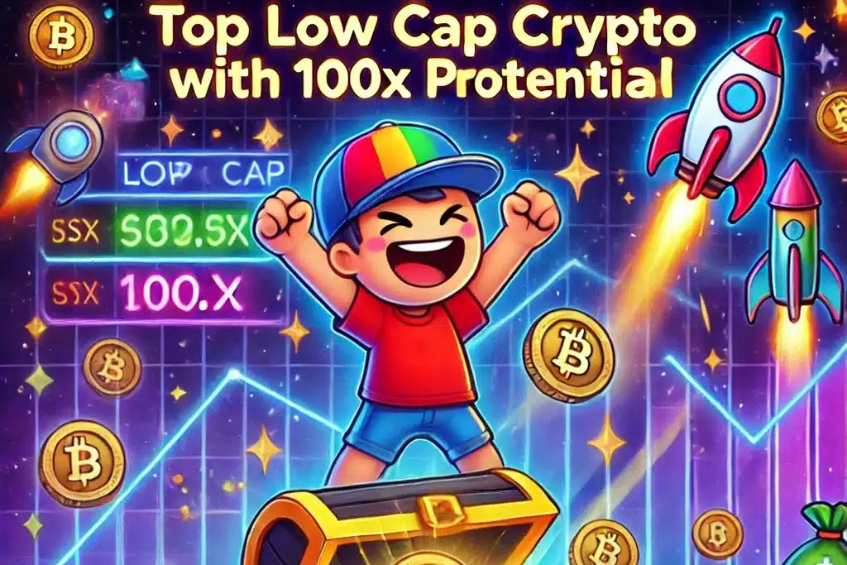Solana and Ethereum are two of the most prominent platforms for decentralized applications and smart contracts, which is why they are frequently compared.
Solana’s fast transaction speeds and low fees have led some to call it an “Ethereum killer,” directly challenging Ethereum’s established dominance.
As both platforms evolve, the debate over which is better, Solana or Ethereum, continues to grow, particularly as their 2025 outlook comes into focus.
| # | Name | Price | Changes 24H | Market Cap | Volume 24H | Available Supply | Price Graph (7D) |
|---|
Best Blockchain 2025: Solana or Ethereum? A Summary
has the largest ecosystem for DeFi and NFTs, while is all about speed and low fees.The Solana vs Ethereum debate is important because it highlights what each blockchain does best—and what that means for their future.
If you’re thinking about investing in ETH or SOL, it’s worth understanding how they stack up to make the best choice for your goals.
Key Highlights
Solana vs Ethereum: Understanding the Basics
Solana and Ethereum are among the leading blockchain platforms in the cryptocurrency space, each catering to unique use cases and addressing different blockchain challenges.
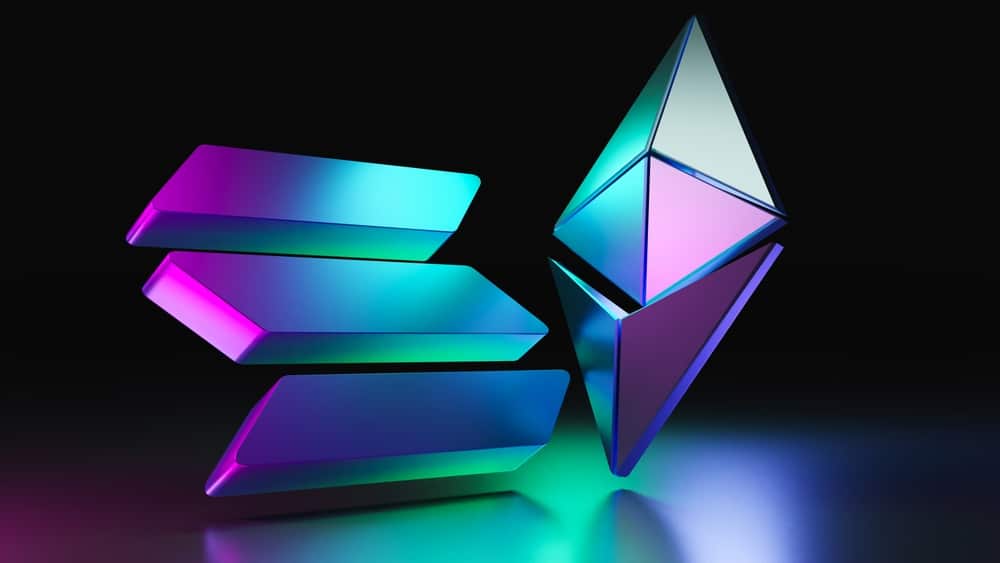
While Ethereum has the first-mover advantage in decentralized applications (dApps) and smart contracts, Solana has emerged as a strong alternative focused on high-speed transactions and scalability.
Understanding their key differences, especially in tokenomics and consensus mechanisms, can help evaluate which blockchain may better suit specific needs or lead the market in the long run.
Tokenomics of Solana and Ethereum
Solana and Ethereum have very different approaches to how their tokens work. Ethereum is all about long-term value and security, while Solana focuses on being fast and affordable, making each one suited for different kinds of users and applications.
Ethereum Tokenomics
Ethereum is designed to balance flexibility, sustainability, and value over time. Right now, there are around 120.8 million ETH in circulation, with no hard cap on how much ETH can exist. However, things changed in 2021 with the introduction of EIP-1559, which burns a portion of transaction fees.
This means some ETH is permanently removed from circulation, and during busy times, Ethereum can actually become deflationary—more ETH is burned than created. Since this change, over 4.62 million ETH has been burned, helping reduce supply growth.
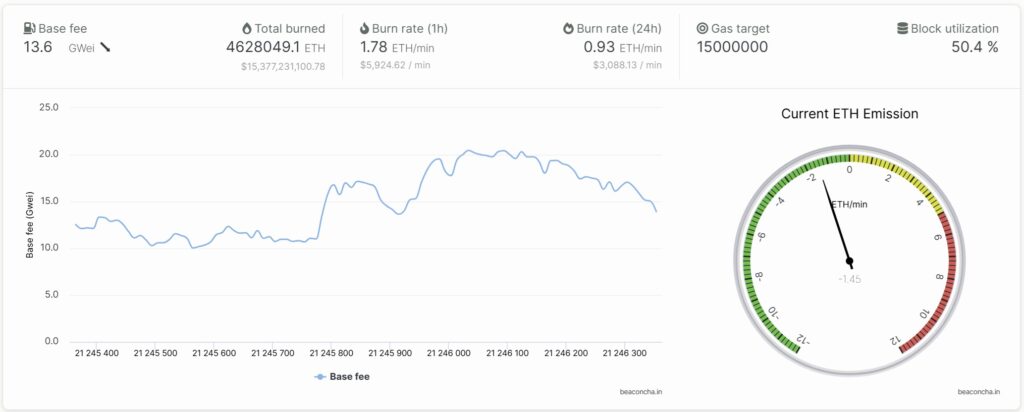
Ethereum’s switch to Proof of Stake (PoS) has also shifted how new ETH is issued. Validators—people who stake their ETH to help secure the network—earn annual rewards of 4-7%, with Coinbase claiming an estimated APY of 2.23% as of 2024.

The official Ethereum website gives the staking APR as 3.2%.
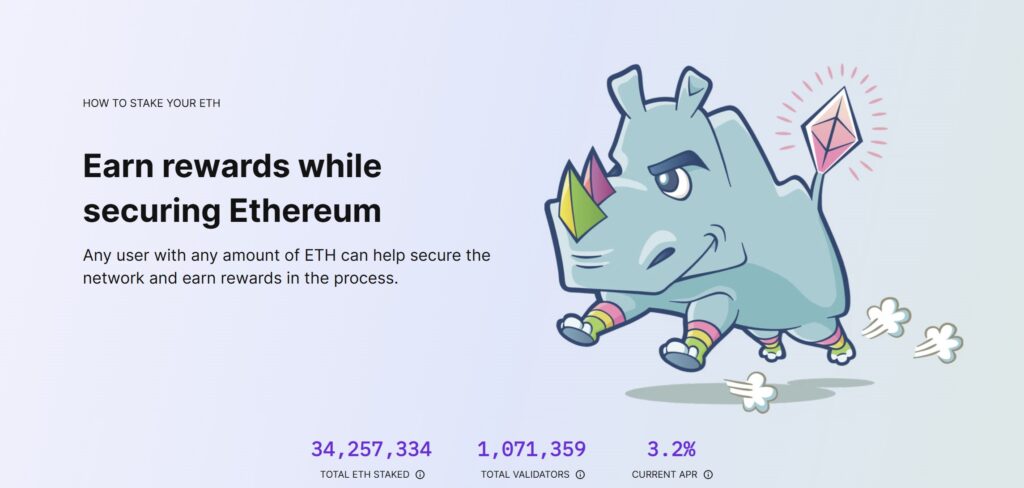
At the moment, about 34.7 million ETH (28% of the total supply) is staked, which also helps stabilize the price by keeping those tokens locked up.

While gas fees can be high, averaging $3 to $10 per transaction, Ethereum is still the biggest blockchain development platform in the crypto space.
Solana Tokenomics
Solana’s economic model is all about speed, scalability, and adoption. There were 500 million SOL tokens when Solana launched, and the supply has since grown to about 588 million. Unlike Ethereum, Solana has an inflationary model—new tokens are regularly added.
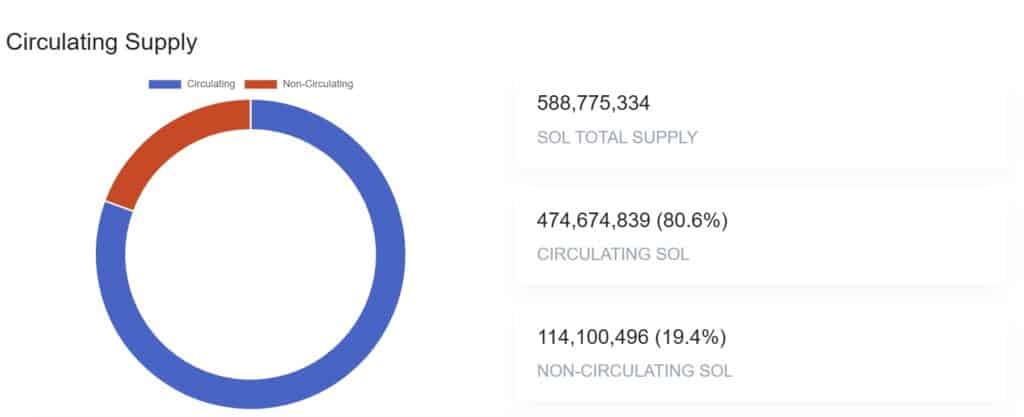
The current inflation rate is 8% per year, but this decreases by 15% annually and will eventually stabilize at 1.5%. This setup ensures that the network rewards its participants while slowly reducing the rate of new tokens entering circulation.
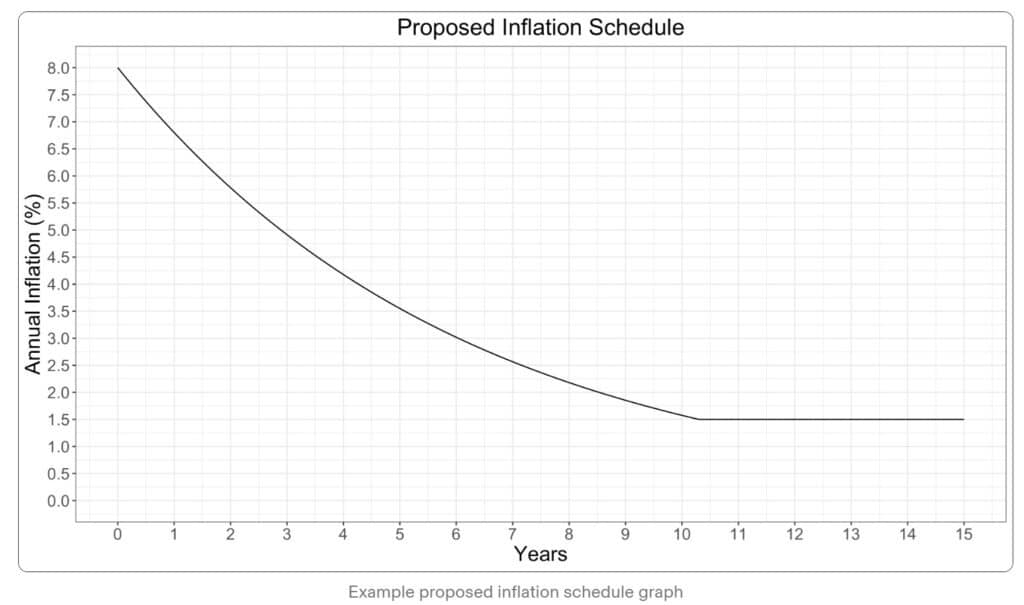
Staking is also central to Solana’s ecosystem. According to Solana Compass, 386,245,067 SOL is currently being staked, and since there are currently 474,674,824 SOL in circulation, a whopping 81.43% of all SOL tokens are currently staked.
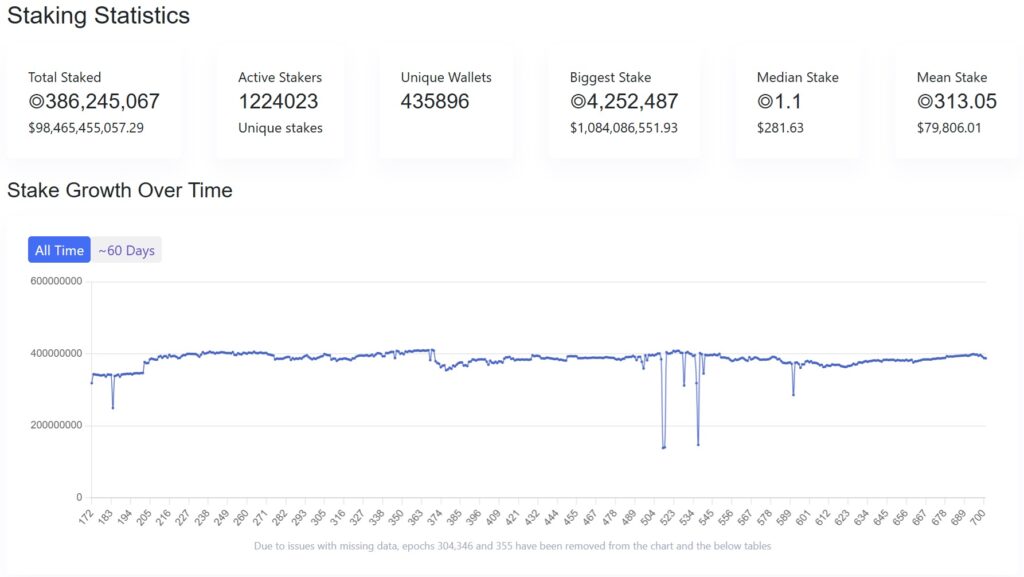
Solana’s inflationary model supports its rapid growth and adoption, making it an exciting option for developers and users who prioritize affordability and performance.
Is Solana Better Than Ethereum? Consensus Mechanism Comparison
Solana and Ethereum are two of the biggest names in blockchain, but they work in very different ways. Ethereum uses Proof of Stake (PoS), which is great for security and decentralization. Solana combines Proof of History (PoH) with PoS, focusing on speed and efficiency.
Let’s break down what makes these systems unique and how they stack up against each other.
Ethereum (Post-Merge): Proof-of-Stake
Ethereum completed its transition from Proof-of-Work (PoW) to Proof-of-Stake (PoS) with “The Merge” in September 2022.
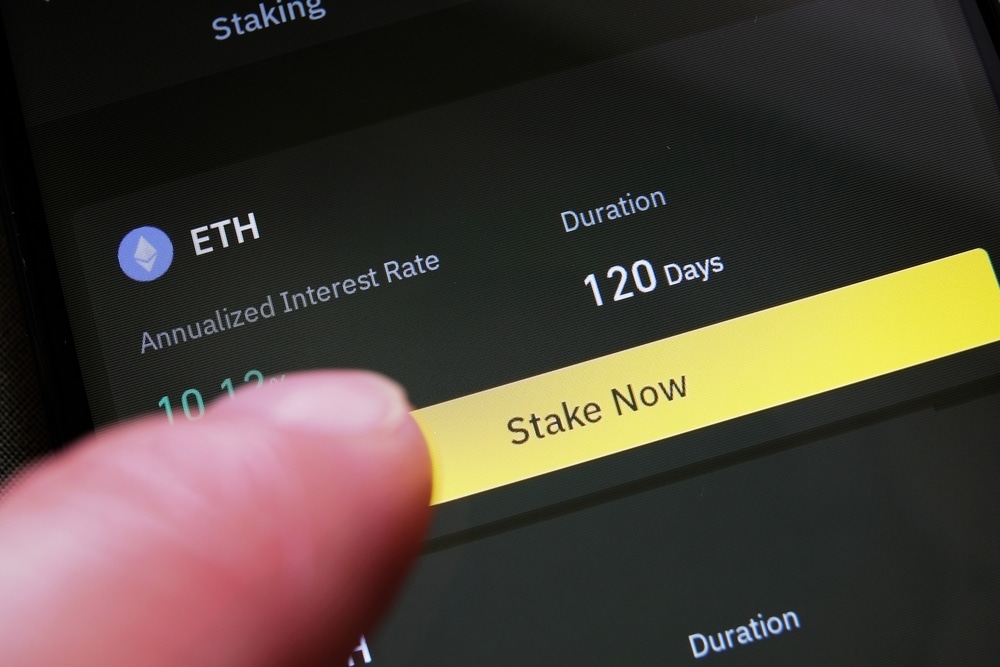
In PoS, validators replace miners. Validators are chosen to validate transactions and propose new blocks based on the amount of ETH they have staked.
Advantages:
- Energy Efficiency: PoS significantly reduces Ethereum’s environmental impact compared to PoW, as it eliminates the need for energy-intensive mining.
- Scalability: While PoS alone doesn’t increase transaction throughput, it lays the foundation for Ethereum’s future upgrades, such as sharding, which are expected to enable thousands of transactions per second (TPS).
- Security: Validators have their staked ETH at risk, incentivizing honest behavior. Malicious activity can result in penalties, including slashing (loss of staked ETH).
Challenges:
- Ethereum’s PoS requires a minimum of 32 ETH to run a validator node, which may deter smaller investors.
- Though improved, Ethereum still faces higher gas fees and slower transactions compared to competitors like Solana.
Solana: Proof-of-History + Proof-of-Stake
Solana’s consensus mechanism uniquely combines Proof-of-History (PoH) with Proof-of-Stake (PoS). PoH serves as a cryptographic clock, creating a verifiable timestamp for each transaction.

This timestamping system reduces the computational work required to confirm transactions and allows Solana to achieve unparalleled speed.
Advantages:
- High Throughput: Solana can process up to 65,000 TPS, compared to Ethereum’s current ~30 TPS.
- Low Latency: Transactions are confirmed in under a second, making Solana suitable for high-frequency applications like gaming and decentralized exchanges (DEXs).
- Energy Efficiency: Like Ethereum’s PoS, Solana’s hybrid model avoids energy-intensive mining, making it eco-friendly.
Challenges:
- Decentralization: Solana’s speed comes at the cost of greater centralization. Running a validator node on Solana requires significant hardware resources, limiting participation.
- Network Reliability: Solana has experienced multiple outages in the past due to heavy network usage and technical vulnerabilities.
Solana vs Ethereum: Transaction Speed and Throughput
Transaction speed and throughput are like a blockchain network’s heartbeat and muscle power—they determine how quickly and efficiently transactions are processed and confirmed.
- Transaction speed ensures users don’t have to wait long for their transactions to go through, keeping the experience smooth.
- Throughput measures how many transactions a network can handle per second (TPS), which is crucial for scaling and accommodating more users.
Together, these metrics shape how usable and scalable a blockchain platform is, especially as demand grows.
Comparing Solana’s Transaction Speed and Throughput to Ethereum’s
Let’s break down how Solana and Ethereum stack up when it comes to transaction speed and throughput:
|
Feature |
Solana |
Ethereum (Post-Merge) |
|
Transactions per Second (TPS) |
Up to 65,000 TPS |
Around 15–30 TPS |
|
Average Confirmation Time |
~400 milliseconds |
~5–20 seconds |
|
Consensus Mechanism |
Proof-of-History (PoH) + Proof-of-Stake (PoS) |
Proof-of-Stake (PoS) |
Solana offers higher transaction speeds and throughput than Ethereum’s base layer. However, Ethereum’s adoption of layer-2 solutions significantly boosts its scalability, narrowing the performance gap between the two platforms.
Scaling Challenges of Ethereum and Solana
Both Solana and Ethereum are working hard to tackle their scalability issues because they know handling more transactions is key to their long-term success. Right now, Solana is ahead in terms of transaction speed, thanks to its unique technology.

However, as more people start using the network, keeping everything running smoothly is a big challenge. One reason is that validators on Solana need specialized hardware, which could lead to centralization since not everyone has access to such advanced equipment.
Ethereum, being the more established network, has a different set of challenges. It’s focusing on scaling up without losing its decentralized nature—something that’s easier said than done.
To manage this, Ethereum has embraced some smart strategies. One is promoting layer-2 networks like Optimism, Arbitrum, and zkSync, which handle transactions outside the main blockchain to reduce congestion.
Another is sharding, a future upgrade that will split Ethereum into smaller sections (shards), each capable of handling its own transactions. This upgrade is expected to massively increase how much the network can handle without compromising its core values.
Both networks are making progress, but they’re taking different paths to solve the same problem: how to grow while staying true to what makes them unique.
Ethereum vs Solana: Transaction Fees Compared
Ethereum and Solana handle transaction fees very differently. On Ethereum, fees can get really expensive, especially when a lot of people are using the network. You might pay anywhere from a few dollars to over $50 during busy times.
This happens because Ethereum’s fee system is tied to how much demand there is, and it can only process about 15 transactions per second on its main network.
However, according to YCharts, the average transaction fee on Ethereum was $1.230 at the time of writing.

Solana, on the other hand, keeps fees super low—usually around $0.00025 per transaction, according to most sources.
However, Solana Compass gave an average of $0.00067, at the time of writing. That’s because it’s built to handle thousands of transactions per second, making it faster and cheaper to use, even during busy periods.
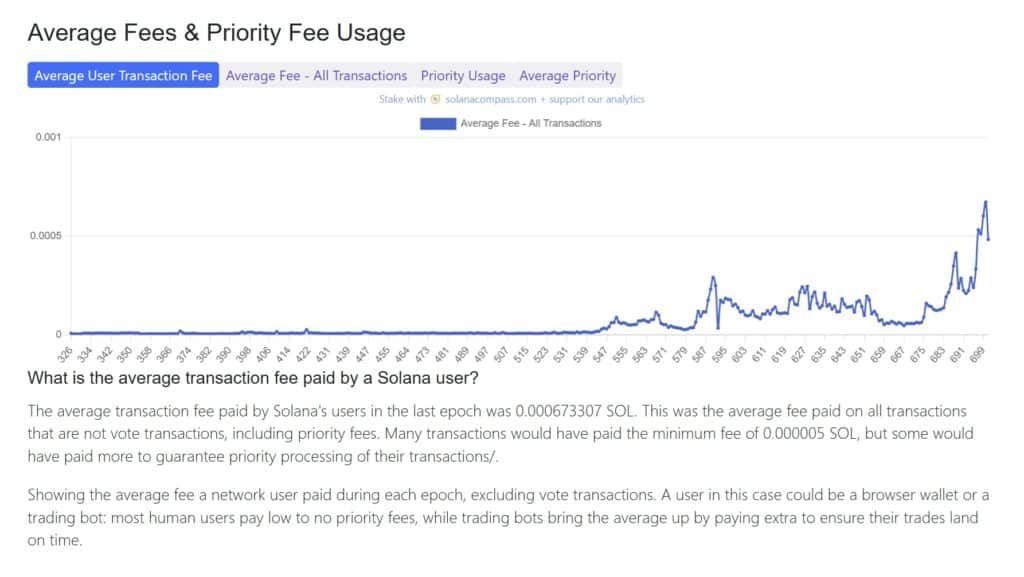
The difference comes down to how each network is designed. Ethereum focuses on being decentralized and secure, which makes scaling more complicated and fees higher.
Solana is all about speed and low transaction costs, but it relies on specialized hardware, which could lead to centralization over time.
| Feature | Solana | Ethereum |
|---|---|---|
| Transactions Per Second | Up to 65,000 (theoretical), 3,000–4,000 (practical) | ~15 (base layer) |
| Average Transaction Fee | ~$0.00025 | ~$2–$20 (can exceed $50 during congestion) |
| Number of Validators | Over 1,400+ | ~11,000+ |
Solana vs Ethereum: Smart Contract Capabilities
When it comes to smart contracts, Ethereum and Solana take different approaches, and it all starts with the programming languages they use. Ethereum relies on Solidity, a language built specifically for creating smart contracts.

If you’re a developer with experience in JavaScript, Python, or C++, you’ll find Solidity familiar and easy to pick up. Ethereum also supports Vyper, which is a simpler, security-focused alternative to Solidity.
This makes Ethereum the go-to platform for many developers because of its rich tools, massive community, and years of maturity in the blockchain space.
Solana, on the other hand, uses Rust as its primary programming language for smart contracts, which it calls “programs.” Rust is known for being fast and safe, which fits Solana’s focus on speed and performance.
Developers can also use C or C++ to write smart contracts on Solana, giving them more flexibility. Solana’s unique design allows it to handle thousands of transactions per second at super-low costs, making it ideal for things like gaming platforms or apps that need real-time processing.
| Feature | Ethereum | Solana |
|---|---|---|
| Languages | Solidity, Vyper | Rust (main), C, C++ |
| Ease for Developers | Familiar for JavaScript, Python, C++ devs | Best for Rust, C, or C++ devs |
| Ecosystem Size | Large, with many active projects | Smaller, growing fast |
| Strengths | Mature platform, big community, lots of tools | Fast, low-cost, handles many transactions |
| Drawbacks | Higher fees, slower | Fewer tools, less mature |
| Best For | Reliable projects with strong support | Games, real-time apps, low-fee needs |
| Recommendation | Safe choice for most projects | Great for speed-focused applications |
That said, Ethereum has been around longer and has a much larger ecosystem. Developers working on Ethereum benefit from an extensive library of tools, resources, and community support.
While incredibly fast and scalable, Solana is still catching up in terms of development resources and the number of active projects.
So, if you’re building something that demands speed and low fees, like a game or high-frequency trading app, Solana is a strong option.
But if you want a platform with a proven track record, lots of tools, and a massive developer community, Ethereum is still the safer bet. Both have their strengths, and the choice often comes down to the specific needs of your project.
Solana vs Ethereum: A TVL Comparison
Total Value Locked, (TVL), is a crucial metric in DeFi that measures how much money is actively invested in a blockchain’s protocols. It includes assets people lock up in smart contracts for activities like lending, staking, or liquidity pools.
Simply put, a higher TVL reflects greater trust from users and shows how healthy and active a blockchain’s ecosystem is.
Ethereum’s TVL Performance
As the original home of DeFi, Ethereum has consistently held the dominant position in terms of TVL. Back in November 2021, its TVL hit an impressive peak of around $110 billion, fueled by a surge of interest in DeFi projects and applications.
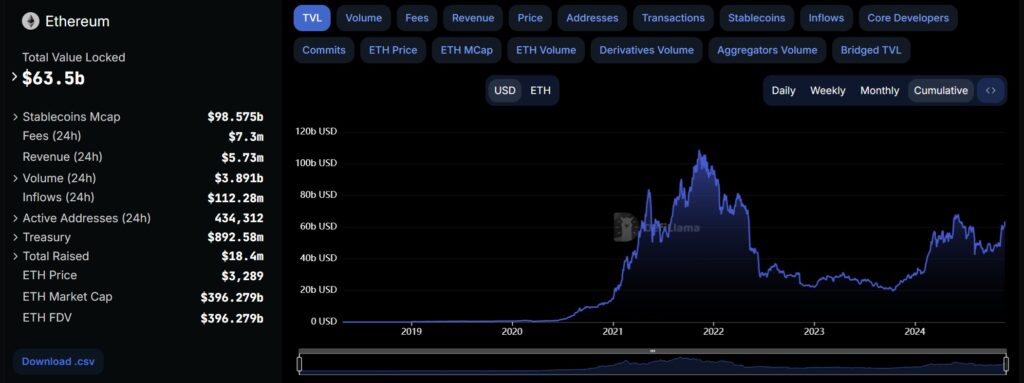
Over time, market fluctuations and rising competition from newer blockchains have impacted its numbers. Despite this, as of November 22, 2024, Ethereum still leads with a TVL of $50 billion, cementing its position as the go-to platform for decentralized finance.
Solana’s TVL Performance
Solana, on the other hand, has quickly made a name for itself in DeFi, thanks to its fast and low-cost transactions. In late 2021, its TVL soared to about $10 billion, showing how much attention the platform was getting.
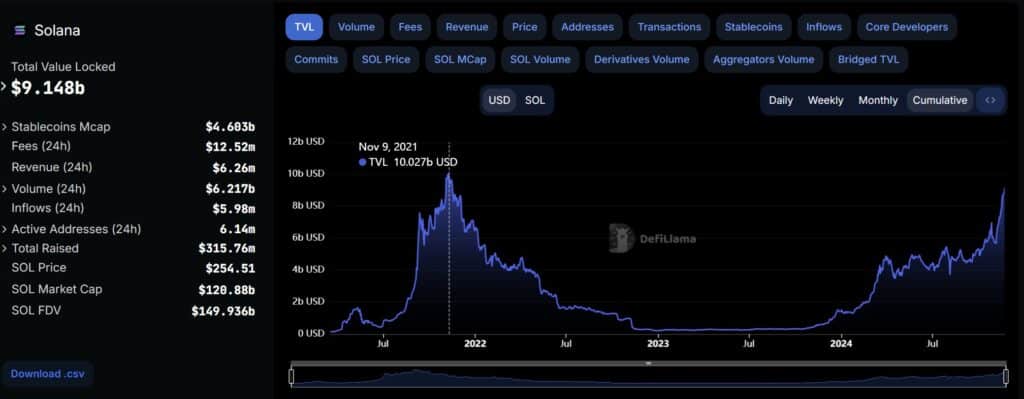
While it has faced challenges like occasional network outages and market volatility, Solana’s DeFi ecosystem has held strong. As of November 22, 2024, Solana’s TVL stands at around $8.8 billion, a testament to its growing popularity and expanding user base.
Below is a chart of how both protocols compare when it comes to TVL, with data taken from DefiLlama:
| Metric | Ethereum | Solana |
|---|---|---|
| Total Value Locked (TVL) | $63.74 billion | $8.794 billion |
| Stablecoins Market Cap | $98.57 billion | $4.604 billion |
| Active Addresses | 429,591 | 6.95 million |
| Total Raised | $18.4 million | $315.76 million |
| Price | $3,332 | $257.82 |
| Market Cap | $401.17 billion | $122.284 billion |
| Fully Diluted Valuation | $401.17 billion | $151.674 billion |
The numbers tell the story. Ethereum remains the leader in DeFi with a significantly higher TVL, thanks to its established ecosystem and broad developer support. Solana, however, is catching up, offering a scalable and cost-efficient alternative that’s attracting more users and developers.
Watching these trends is a great way to understand the shifting dynamics in the DeFi landscape.
Solana Staking vs. Ethereum Staking
Staking on Ethereum and Solana works differently, and both have their unique benefits and challenges. Let’s break it down in simple terms.
Ethereum Staking:
When Ethereum switched to Proof-of-Stake in 2022, it introduced a new way for users to secure the network and earn rewards. To become a validator on Ethereum, you need to stake at least 32 ETH, which can be pretty expensive.
But don’t worry—there are other options. Many platforms offer staking services where you don’t need to run your own validator. Some even let you stake smaller amounts through something called liquid staking, where you can still use your staked ETH in DeFi while earning rewards.
Currently, Ethereum has over 1 million validators, showing just how decentralized and trusted it is.
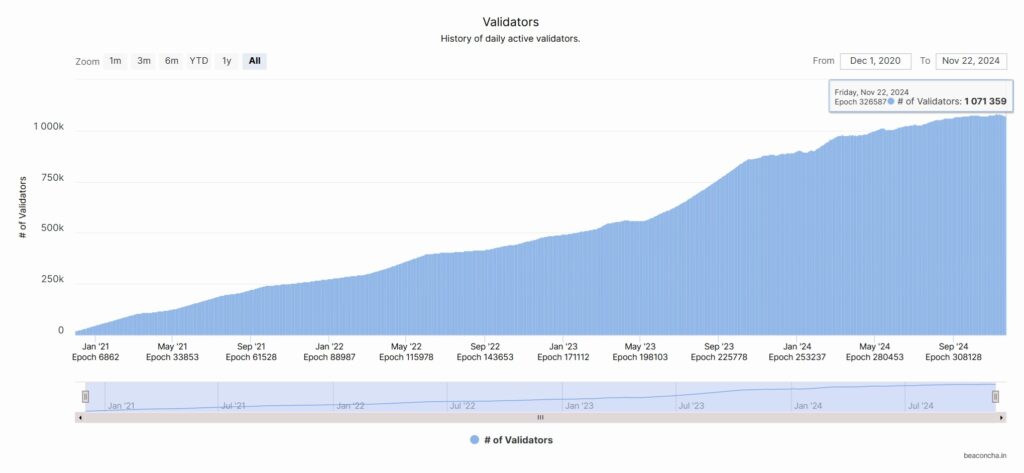
Solana Staking:
Solana’s staking system is more flexible. There’s no minimum amount to stake, so you can participate even if you don’t have a lot of SOL. Solana’s low transaction fees also make it accessible to smaller stakeholders. Its unique design—combining Proof-of-Stake and Proof-of-History—keeps things fast and efficient.
Staking on Solana offers higher rewards compared to Ethereum, averaging around 5.33% to 8% annually. For example, with Coinbase, you can earn around 6.29% annually, but if you run your own node, you can earn 7-8%, according to MilkRoad.

While Solana has fewer validators, just over 1,4oo active ones, it’s steadily growing and gaining traction.
Which One Has More Stakers?
Ethereum leads the way with many validators, making it one of the most decentralized networks out there.
Solana has a much smaller validator count and it is still developing in this area but compensates with higher rewards and easier entry.
In short, if you want higher rewards with less upfront cost, Solana might be your choice. But if you’re looking for a more established network with a huge base of validators, Ethereum takes the crown.
If you’re interested in staking and finding out which platforms have the highest APY, check out our Best Crypto Staking Platforms for a detailed breakdown.
Solana vs Ethereum NFTs
When it comes to all-time NFT sales, Ethereum is still the undisputed leader, with a massive $44.57 billion in total sales. That’s miles ahead of Solana, which has a respectable but much smaller $5.99 billion in all-time sales.

What’s interesting is that while Ethereum has had 3.36 million buyers, Solana has seen a larger 5.39 million—suggesting that Solana appeals to a broader audience, but Ethereum dominates in market value.
The dominance of Ethereum becomes even clearer when you look at the all-time top 10 NFT collections. Eight out of the top 10 are Ethereum-based, including heavyweights like Bored Ape Yacht Club, CryptoPunks, and Mutant Ape Yacht Club.
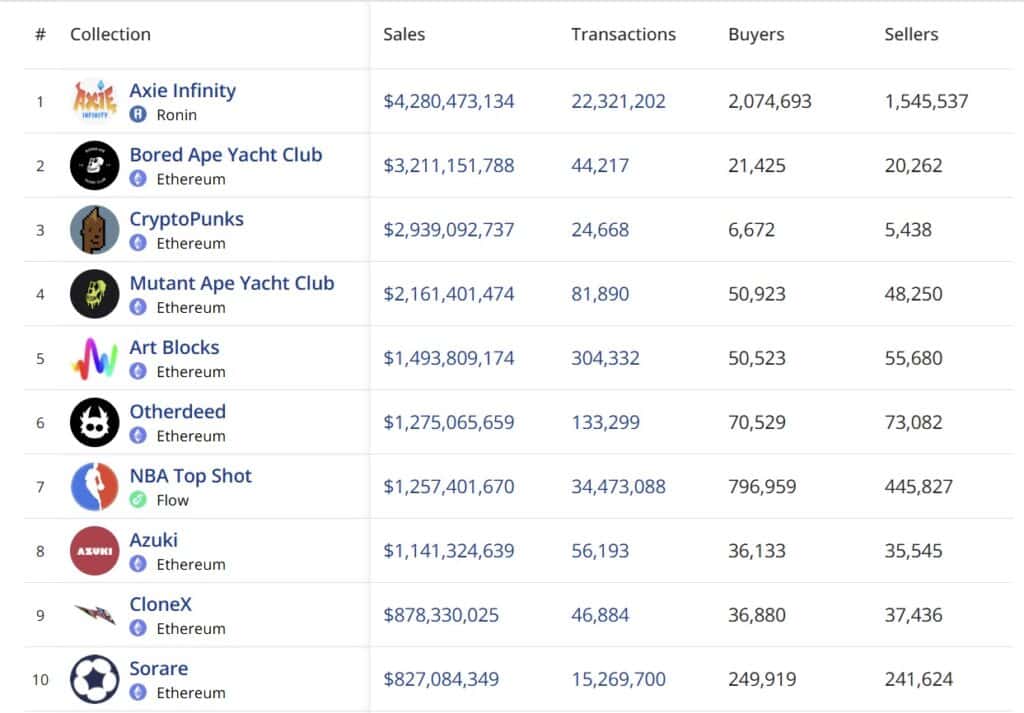
The only collections not directly on Ethereum are NBA Top Shot, which is based on the Flow blockchain, and Axie Infinity, which operates on Ronin—a Layer 2 sidechain built for Ethereum. Even when collections venture onto secondary layers, Ethereum’s influence is hard to escape.
Solana, on the other hand, is carving out its niche. It offers faster transactions and lower fees, which makes it appealing to creators and collectors looking for a more affordable option. However, Solana hasn’t yet produced any collections that rival Ethereum’s flagship projects in sales or cultural impact.
To sum it up, Ethereum remains the go-to platform for high-value, headline-grabbing NFT projects, cementing its position as the market leader. Solana, meanwhile, is gaining traction as a cost-effective alternative, but it still has a long way to go before it challenges Ethereum’s dominance.
Solana vs Ethereum DeFi
Ethereum and Solana are two powerhouses in the DeFi space, each bringing unique strengths to the table.
The Ethereum blockchain, as the pioneer of decentralized finance, boasts a well-established ecosystem with a wide range of applications and the highest Total Value Locked (TVL).
The Solana network, on the other hand, has made significant strides with its fast transaction speeds and lower costs, making it an attractive choice for developers and users seeking cost efficiency.
|
Rank |
Ethereum Protocol |
Category |
TVL (USD) |
Solana Protocol |
Category |
TVL (USD) |
|
1 |
Lido |
Liquid Staking |
$32.459B |
Jito |
Liquid Staking |
$3.649B |
|
2 |
AAVE |
Lending |
$15.977B |
Kamino |
Yield Optimization |
$2.4B |
|
3 |
EigenLayer |
Restaking |
$14.127B |
Raydium |
Decentralized Exchange |
$2.373B |
|
4 |
ether.fi |
Liquid Staking |
$8.047B |
Jupiter |
Liquidity Aggregator |
$2.365B |
|
5 |
MakerDAO |
Stablecoin Issuance |
$6.12B |
Marinade |
Liquid Staking |
$2.041B |
|
Total |
|
|
$76.73B |
|
|
$12.828B |
Ethereum’s top protocols collectively account for a TVL of $76.73 billion, with Lido leading at $32.459 billion due to its liquid staking dominance. AAVE and EigenLayer also significantly contribute to Ethereum’s strong position in lending and restaking.
In contrast, Solana’s top protocols have a combined TVL of $12.828 billion, with Jito as the largest protocol at $3.649 billion. Solana’s focus is more concentrated on liquid staking and decentralized trading solutions.
While Ethereum has the advantage of higher adoption and maturity, Solana offers a growing and efficient ecosystem that appeals to cost-sensitive and high-frequency use cases.
Ethereum vs Solana: Which Will Perform Better?
When it comes to future performance, Ethereum and Solana are often compared in terms of price and market trends. Ethereum, with its mature ecosystem, large dapp ecosystem, and strong developer support, maintains its dominance, but Solana’s rapid growth and innovative technology are making it a serious contender.
Both platforms have unique factors that could influence their price performance in the coming years.
Price Analysis: ETH vs SOL
The SOL/ETH chart is a rollercoaster. It’s been full of sharp ups and downs all year, showing just how competitive these two blockchains are.
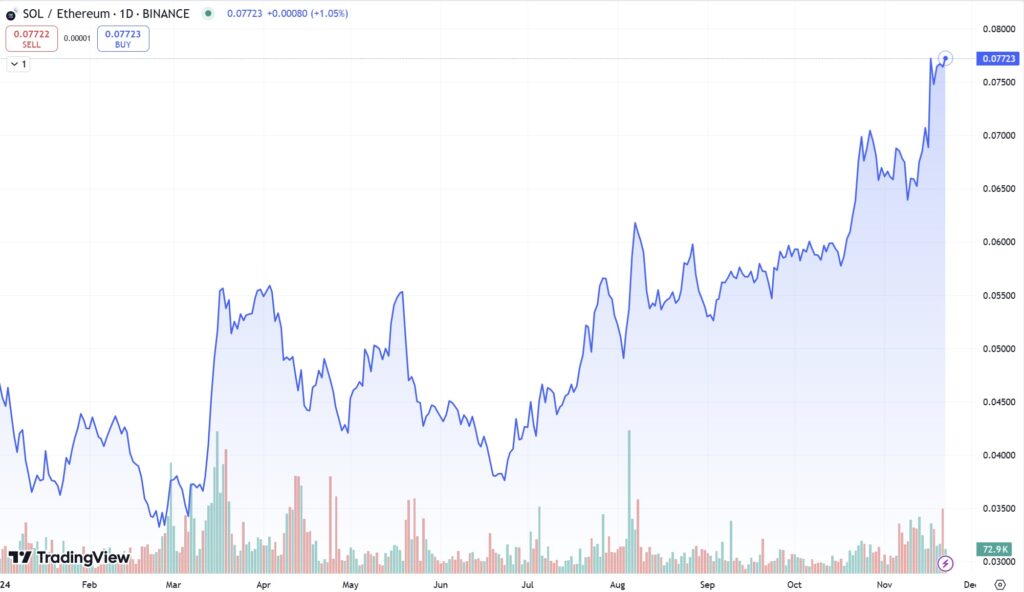
Whenever there’s big news—like major upgrades or ecosystem developments—the market reacts quickly, causing these sudden swings. It’s like investors are constantly recalibrating which network has the better edge.
Long-Term Volume
If you look at the trading volume, it’s clear that people are paying close attention to the SOL/ETH pair. There are noticeable spikes, especially mid-year and again in late November when Solana seemed to gain some ground on Ethereum. These surges usually mean investors are feeling confident about Solana during those times, driving more activity. High trading volume also shows that the rivalry between these two blockchains is still a hot topic in the market.
Valuation
Over the year, Solana’s value compared to Ethereum has been creeping upward. Sure, Ethereum still has the bigger ecosystem and market cap, but Solana’s growth is catching attention. Its scalability, low fees, and expanding ecosystem are giving it a boost. That said, Ethereum’s dominance in DeFi and NFTs keeps it firmly in the lead overall, so Solana still has work to do.
Highs and Lows
The chart also tells a story of highs and lows. Solana had its best moments against Ethereum in August and November of 2024, closing the gap a bit. But in May and July, it had hit rough patches, likely due to network problems or bigger market trends. These kinds of swings are normal, especially for a newer player like Solana trying to compete with a giant like Ethereum.
Fear and Greed
Finally, emotions play a big role in how this trading pair moves. When fear takes over—like during uncertain times or when Solana faces issues—Ethereum usually comes out on top as the safer choice. But when optimism is high and investors are chasing innovation, Solana shines, thanks to its fast and low-cost transactions. This back-and-forth between fear and greed keeps the competition lively and the chart unpredictable.
Ethereum Price Prediction vs Solana Price Prediction
As of November 22, 2024, Ethereum (ETH) and Solana (SOL) are both making waves in the crypto space. Let’s take a closer look at where they stand today and what experts are predicting for their future.
Ethereum is currently trading at $2,195.57. Over the past year, it has gained 61.20%, bringing its market cap to an impressive $404.09 billion.
Meanwhile, Solana is priced at $143.18. Over the past 12 months, SOL has surged by an extraordinary 345.64%, with its market capitalization now at $123.43 billion.
Crypto is unpredictable, but we have some ideas about where Ethereum and Solana could end up in the coming years.
Below is a chart with data taken from our price prediction guides:
| Cryptocurrency | End of 2024 | End of 2025 | End of 2030 |
|---|---|---|---|
| Ethereum (ETH) | $2,500 average | $3,128.20 average | $2,500 average |
| Solana (SOL) | $500 average | $2,000 average | $1,000 average |
For Ethereum, the predictions for 2024 show some potential cooling after its rapid rise, but continued upgrades and adoption could lead to solid growth by 2025.
Solana’s price, on the other hand, could see sharper gains in the shorter term, thanks to its speed and cost efficiency.
Solana and Ethereum: Future Development Plans
Both Ethereum and Solana have ambitious plans for the future, aiming to improve their networks and stay competitive. Let’s break it down simply:
Ethereum’s Plans
Ethereum has a detailed roadmap to make the network faster, cheaper, and easier to use.
Here’s what’s coming:
Solana’s Plans
Solana is also focused on making its network even faster and more reliable. Here’s what they’re working on:
What Does This Mean?
Both Ethereum and Solana are working hard to address their challenges and improve. Ethereum is focusing on long-term scalability and fairness, while Solana is prioritizing speed, reliability, and accessibility. Each blockchain is carving out its space in the crypto world, and these upgrades will play a big role in shaping their futures.
Do Experts Prefer Solana or Ethereum?
The debate between Ethereum and Solana is heating up, with experts from the crypto world divided on which blockchain is better. Both have their strengths, and the choice really depends on what you’re looking for. Let’s hear what the experts are saying.
Why Some Experts Pick Ethereum
Ethereum has been around longer and is often seen as the more reliable and established blockchain. A crypto analyst by the name of Crypto Rover shared his thoughts on the long-term picture, saying,
“I think that in the long term $ETH will win over $SOL.” – Source: Crypto Rover’s X Profile
He highlighted Ethereum’s low inflation rate of just 0-1% compared to Solana’s 30%, which could give Ethereum a major edge in maintaining value over time.
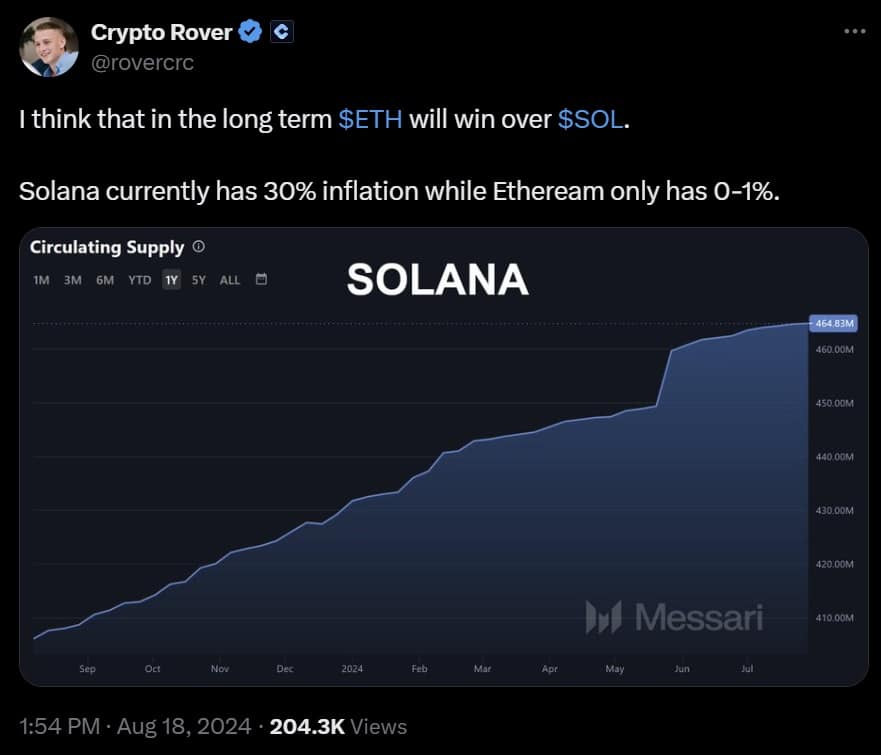
Another key point in Ethereum’s favor is its efficiency. Kyle Reidhead (a crypto analyst) from Milk Road pointed out that
“Ethereum is 3.5 times more efficient in generating revenue than Solana.” – Source: Kyle Reidhead’ X profile
For every dollar of revenue, Ethereum only spends $6, while Solana spends $21. That’s a big difference, especially when you think about the long-term sustainability of each network.

WazzCrypto, a developer and regular blockchain user, also praised Ethereum for its reliability and transparency. He highlighted that Ethereum has a strong open-source culture, making it easier for developers to audit smart contracts, which is critical for decentralized finance (DeFi). He said Ethereum is still the leader in areas like DeFi, analytics, and blockchain transparency.
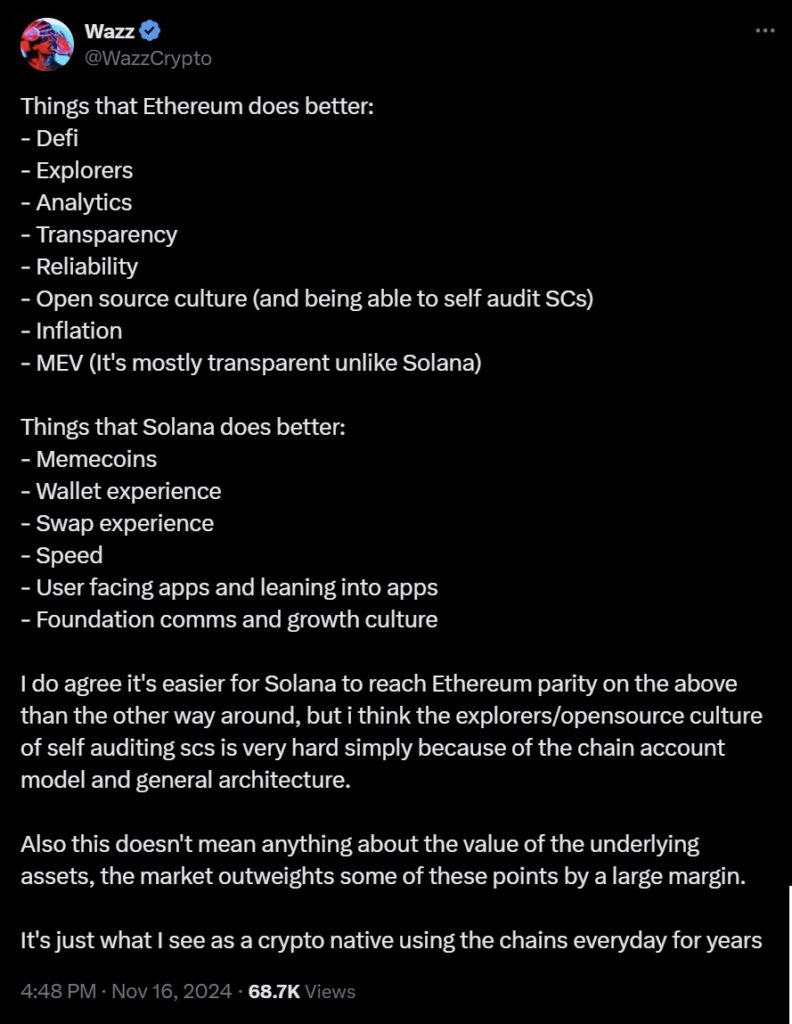
Why Others Are Betting on Solana
On the flip side, Solana has been making waves with its speed, affordability, and growing ecosystem. Ryan Watkins, a well-known blockchain analyst, made a strong case for Solana, saying,
“Solana now rivals Ethereum across nearly every key metric, yet it trades at just 33% of Ethereum’s valuation.” – Source: Ryan Watkins’ X Profile
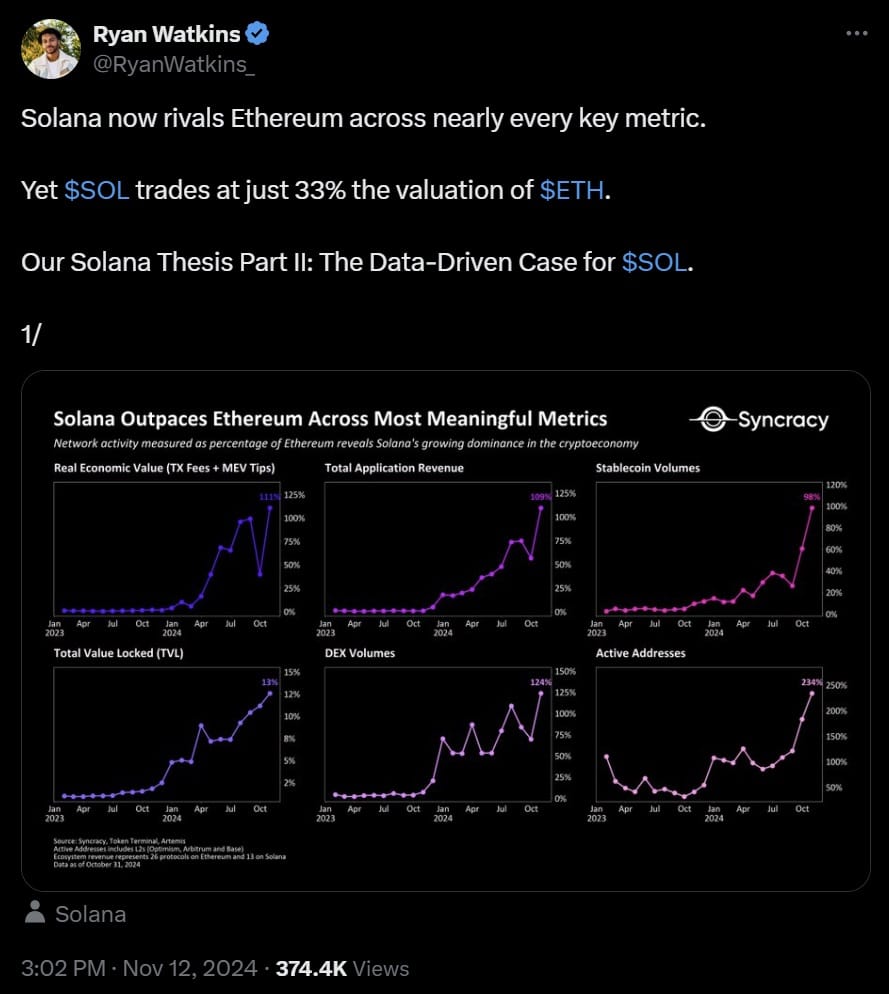
He pointed to Solana’s massive growth in areas like active users, application revenue, and decentralized exchange (DEX) activity.
WazzCrypto also noted Solana’s strengths, especially for retail users. He said Solana does a better job in terms of wallet experience, transaction speed, and low costs. Solana also excels in newer areas like meme coins and user-friendly apps, making it appealing to developers and everyday users alike.
So, Which Is Better?
It really depends on what you’re looking for. Ethereum is the safer, more established option. Its upgrades, like Ethereum 2.0, promise better scalability and lower costs while maintaining its dominance in DeFi and institutional use cases.
Solana, on the other hand, is the rising star. It’s faster, cheaper, and more user-friendly, making it perfect for those focused on cutting-edge tech and retail-friendly applications.
If you’re after stability and long-term reliability, Ethereum might be the better bet. But if you’re excited about innovation and want to be part of a fast-growing ecosystem, Solana could be the way to go. The truth is, both are solid choices—it just depends on your goals.
Conclusion: Solana vs Ethereum: Which is Better in 2025?
Both Solana and Ethereum bring unique strengths to the table. Ethereum is like the seasoned pro—reliable, secure, and packed with features.
Solana, on the other hand, is a fast and affordable option, perfect for people who want speed and low costs.
Choosing between them really depends on what you need. Whether you’re looking for stability or cutting-edge performance, both are shaping up to be key players in 2025.
Frequently Asked Questions
What are the main differences between Solana and Ethereum?
Which blockchain is faster in 2025, Solana or Ethereum?
How secure are Solana and Ethereum networks in 2025?
Should I invest in Ethereum or Solana?
Where can I read more about Ethereum?
Which blockchain has a better future, Solana or Ethereum?
Is Solana faster than Ethereum?
Will SOL outperform ETH in 2025?
References
- Cointelegraph. “Solana vs. Ethereum: Blockchain Comparison.” Cointelegraph, https://cointelegraph.com/learn/articles/solana-vs-ethereum-blockchain-comparison.
- Ethereum.org. “Ethereum Staking.” Ethereum, https://ethereum.org/en/staking/.
- Beaconcha.in. “Ethereum Burn Dashboard.” Beaconcha.in, https://beaconcha.in/burn.
- Lido Help Center. “Ethereum Staking Reward Rate.” Lido, https://help.lido.fi/en/articles/5230595-ethereum-staking-reward-rate.
- Coinbase. “Ethereum Staking.” Coinbase, https://www.coinbase.com/en-gb/earn/staking/ethereum.
- Dune Analytics. “Ethereum 2.0 Staking Dashboard.” Dune, https://dune.com/hildobby/eth2-staking.
- Solana Compass. “Solana Tokenomics.” Solana Compass, https://solanacompass.com/tokenomics.
- Solana. “Inflation Schedule.” Solana, https://solana.com/docs/economics/inflation/inflation-schedule.
- MilkRoad. “Guide to Solana Staking.” MilkRoad, https://milkroad.com/staking/sol/.
- Coinbase. “Solana Staking.” Coinbase, https://www.coinbase.com/en-gb/earn/staking/solana.
- Solana Compass. “Solana Staking Statistics.” Solana Compass, https://solanacompass.com/statistics/staking.
In This Article
Free Bitcoin Crash Course
- Enjoyed by over 100,000 students.
- One email a day, 7 days in a row.
- Short and educational, guaranteed!
Why you can trust 99Bitcoins
Established in 2013, 99Bitcoin’s team members have been crypto experts since Bitcoin’s Early days.
Weekly Research
100k+Monthly readers
Expert contributors
2000+Crypto Projects Reviewed
